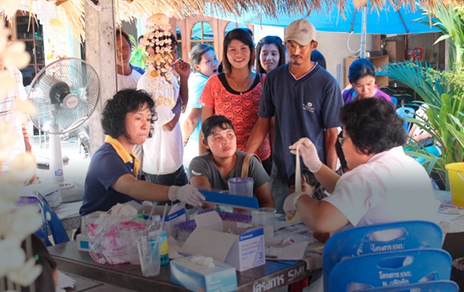The Thai pharmaceutical market is growing due to an aging, wealthier local population and a large medical tourism sector. International companies must however adapt their strategies to suit the Thai market; as must domestic concerns.
With an estimated value of USD 4.5 billion, Thailand is Southeast Asia’s second largest pharmaceutical market after Indonesia. Despite the country’s political and economic uncertainty, drug sales are estimated to hit USD 5.7 billion by 2019. This upward trend is driven by an aging population, whose changing epidemiology increasingly requires prescription medicines; a growing middle class, which often prefer out-of-pocket healthcare to public institutions which are free but overwhelmed; and medical tourism, which has emerged as an important driver of medicine sales.
Although imported branded drugs make up a significant portion of the pharmaceutical market in terms of value, multinationals are faced with significant challenges to penetrate a government-dominated healthcare system where price is king. “Anyone doing business in Thailand knows and understands that it is a vibrant market, which is complex due to the dynamic regulations and policies within the healthcare industry,” explains John Clare, vice president of the healthcare business unit at DKSH Thailand Limited. “The Kingdom is also a fairly complex market in terms of route-to-market. There are various market peculiarities and challenges for each specific healthcare segment,” he adds. Nonetheless, the Thai drug market is seen with positive eyes. “Across the board […] we see strong potential. Growth rates in pharmaceuticals […] and OTC drugs are promising. The medical devices segment particularly shows strong growth,” Clare points out.
In such an arena adaptability seems to be the name of the game to survive. Bristol-Myers Squibb (BMS)’s Annie Tan explains that the company has adapted by keeping more strategic functions in-house and outsourcing tactical functions to partners. Strategic functions allow BMS to drive market access, branding and marketing and expand product access for patients. Additionally, Japanese manufacturer Daiichi Sankyo’s Tatsuya Ikeda has seen government price caps, the universal healthcare system and the aging population as an opportunity to release generics into Thailand’s market and grow from a non-traditional market niche. With this revamped and redesigned strategy, the company has continued to report double-digit growth. Market leader Pfizer’s Christian Malherbe suggests that the company’s focus on innovative pharmaceutical products divided into five focus areas within the organization has led to the optimization of products in the local market and allowed them to align with customer’s needs.
“Across the board we see strong potential. Growth rates in pharmaceuticals and OTC drugs are promising. The medical devices segment particularly shows strong growth.”
John Clare – DKSH Thailand
Adapting to the Thai marketplace often implies foreign players contracting the services of local companies, which can help penetrate and better understand the environment. Market expansion services provider DKSH, for instance, has been in Asia for 150 years and in Thailand for almost 110 years. “We help our clients and customers grow in Thailand by offering a broad range of market expansion services across the entire value chain: from regulatory consulting to marketing, sales, distribution and logistics,” explains Clare. “As business partners for our clients, we help them gain a comprehensive understanding of the Thai market and work towards creating success for their products in this dynamic, yet complex market.” A further strategy big pharma have implemented to mitigate risks is to outsource production to local contract-manufacturing organizations (CMO). “OLIC produces products for over 40 multinational organizations, including most of the world’s top 10 pharmaceutical companies,” explains Toyoyuki Kamide, managing director of the leading CMO OLIC.
Understanding the needs of the market to better navigate the changing waters seems to be a priority also of local players. Prapol Thanachotipan of T. Man Pharma states that the company adapts its product lines to the needs of local patients and invests in R&D of new drug formulas, including development of new technologies in the medical field, clinical trials and bioequivalence studies.


